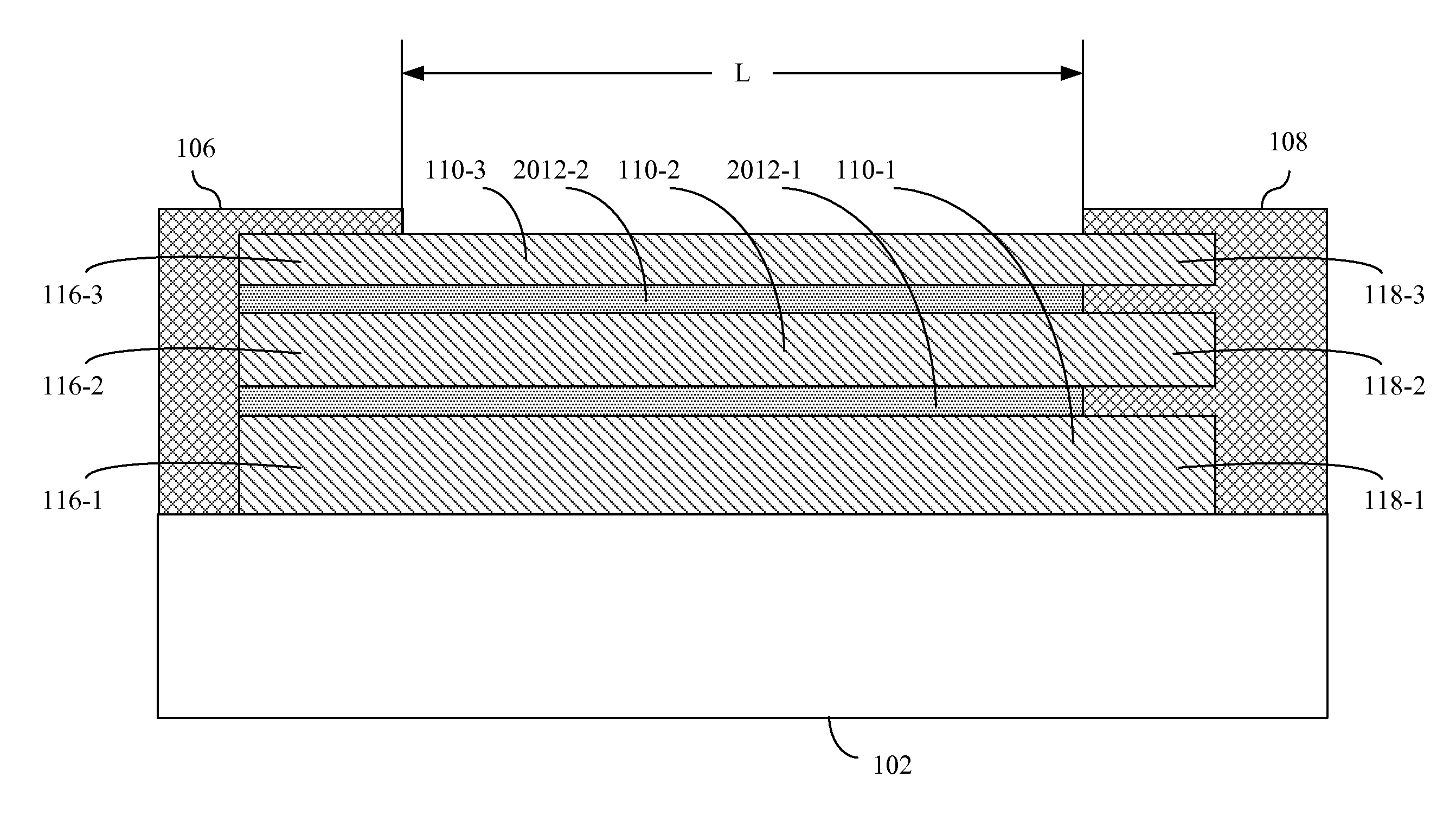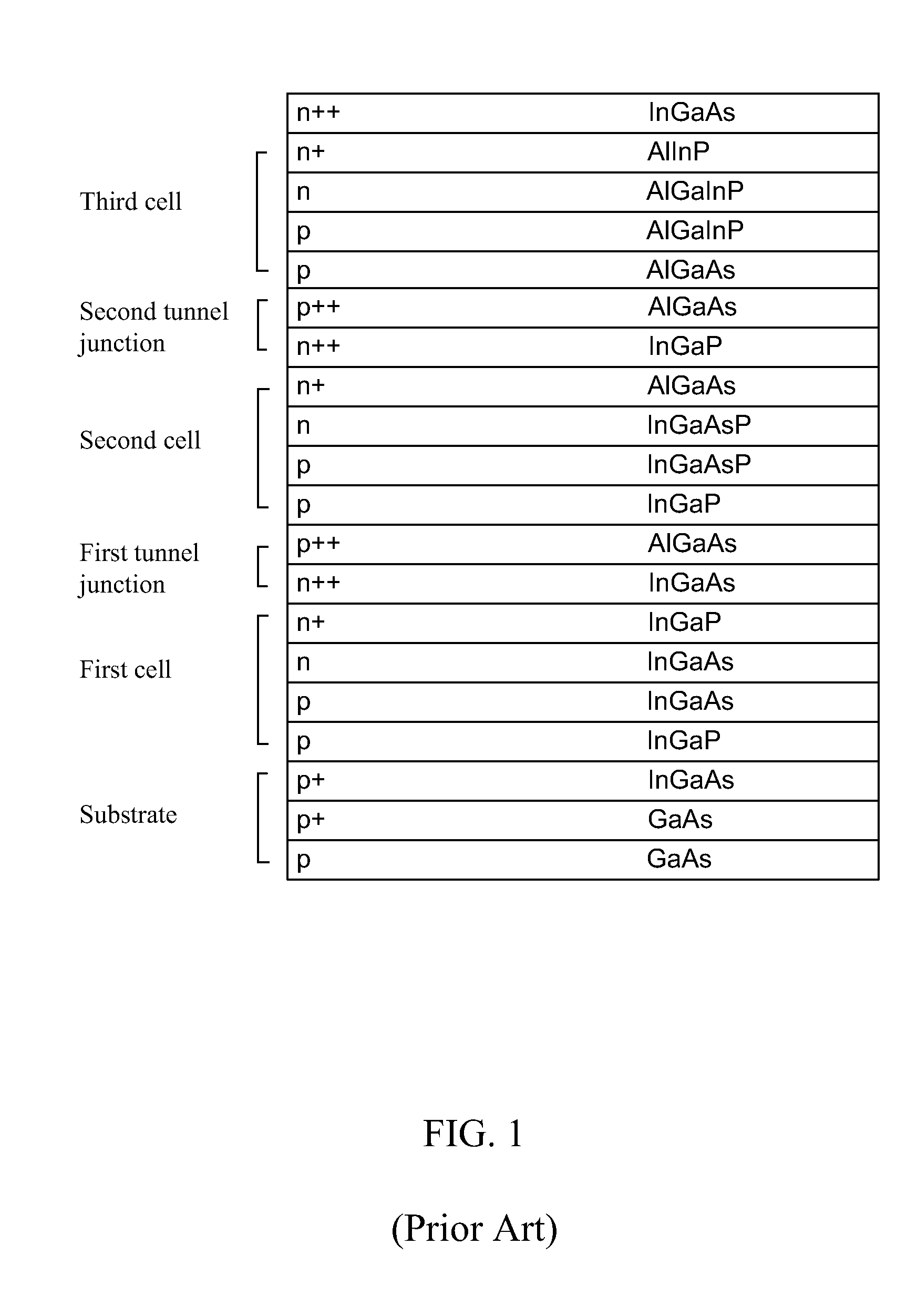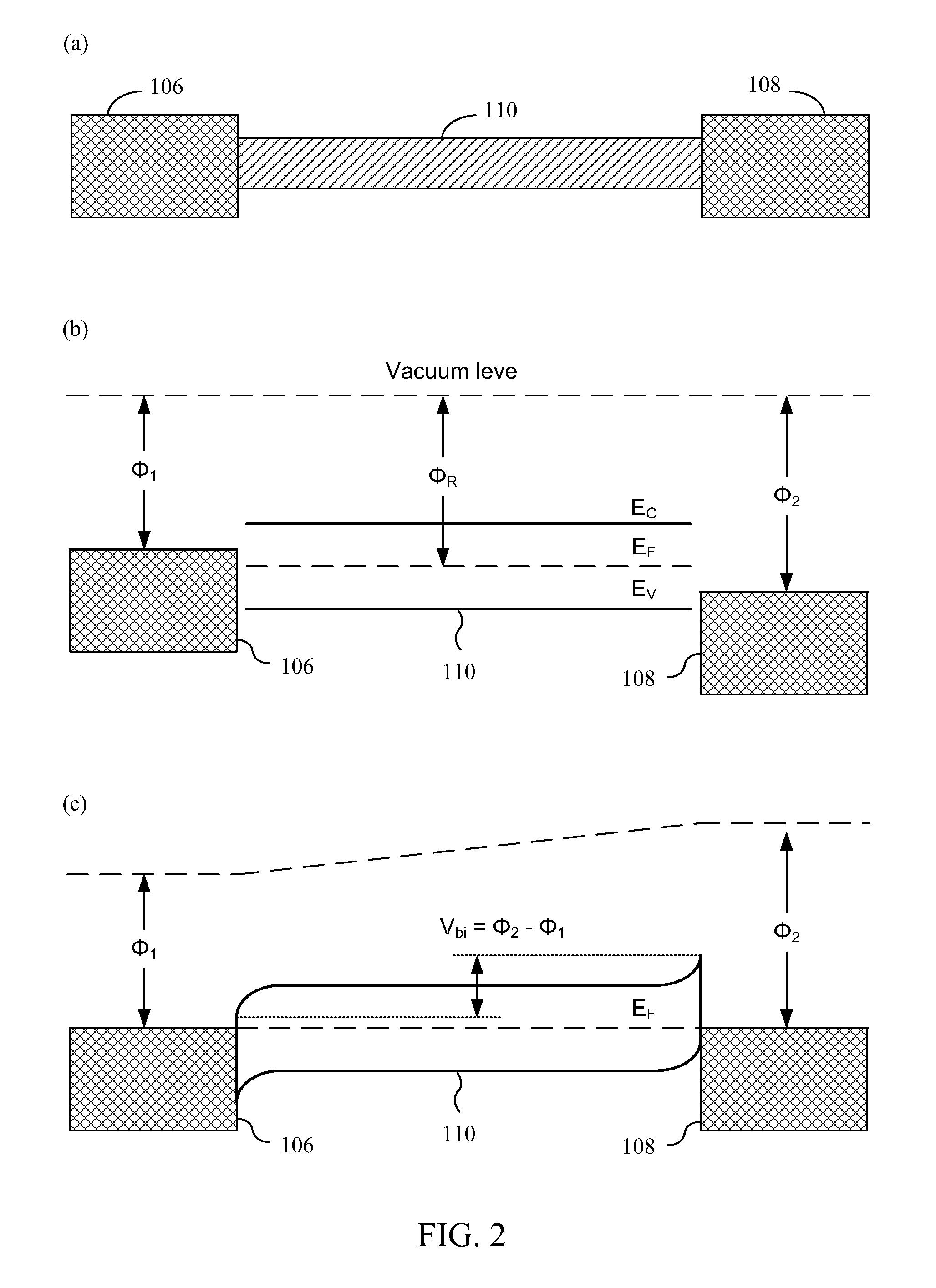Homogeneous multiple band gap devices
a multi-band gap, heterogeneous technology, applied in the direction of semiconductor devices, electrical devices, nanotechnology, etc., can solve the problems of 69 percent of solar energy not being cultivated, the semiconductor cannot absorb photons with energy, and the maximum efficiency that a photoelectric device can achieve, etc., to achieve the effect of improving efficiency and being easy to fabrica
- Summary
- Abstract
- Description
- Claims
- Application Information
AI Technical Summary
Benefits of technology
Problems solved by technology
Method used
Image
Examples
Embodiment Construction
[0098]Disclosed herein are multiple band gap devices comprising a plurality of semiconducting nanoribbons disposed on a substrate or comprising a plurality of stacks disposed on a substrate with each stack having a plurality of semiconducting nanoribbons. Each nanoribbon in the plurality of semiconducting nanoribbons is characterized by a band gap, and is in electrical communication with two conductive leads.
[0099]Also disclosed herein are multiple band gap devices comprising one or more semiconducting nanohole superlattices comprising one or more stacks disposed on a substrate with each stack having one or more semiconducting nanohole superlattices. Each nanohole superlattice is characterized by a band gap range, and is in electrical communication with two conductive leads.
[0100]The instant multiple band gap devices can be used for various applications, for example, as photovoltaic solar cells for converting light into power, as photodetectors for converting an incident light into ...
PUM
 Login to View More
Login to View More Abstract
Description
Claims
Application Information
 Login to View More
Login to View More - R&D
- Intellectual Property
- Life Sciences
- Materials
- Tech Scout
- Unparalleled Data Quality
- Higher Quality Content
- 60% Fewer Hallucinations
Browse by: Latest US Patents, China's latest patents, Technical Efficacy Thesaurus, Application Domain, Technology Topic, Popular Technical Reports.
© 2025 PatSnap. All rights reserved.Legal|Privacy policy|Modern Slavery Act Transparency Statement|Sitemap|About US| Contact US: help@patsnap.com



